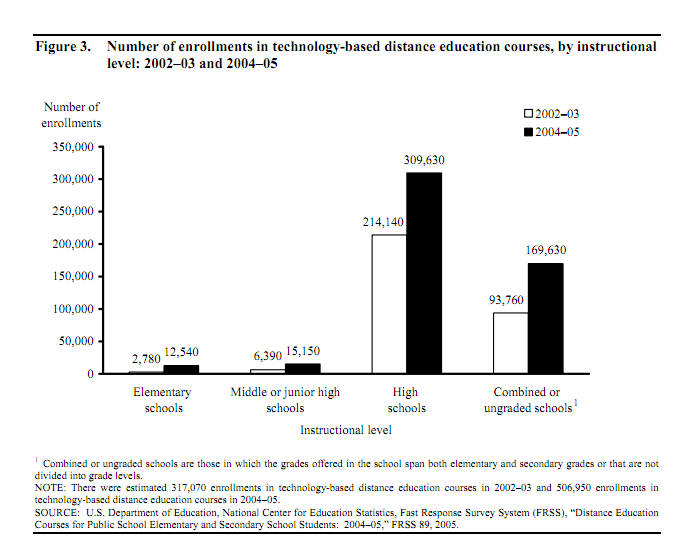
What Technology Powers Online Universities?
Distance education and correspondence courses have existed for much longer than the internet, but new technology in the past 30 years has spiked the sheer volume and richness of educational content that can be delivered remotely. Institutions of higher learning are taking advantage of high speed internet connections, plummeting laptop prices, and rapid software innovation to deliver knowledge in massive quantities at lower costs.
The new technology isn’t only on the institutional side, though. Tablet computers, netbooks and portable WiFi hotspots give students diverse choices about how, when, and where to do their school work. The proliferation of options can be a boon for students with jobs, kids and packed schedules, but too many choices can also cause confusion. Students need to manage their time well no matter what technology they use, and a combination of good gadgets and good habits is crucial for anyone wanting to succeed in online courses.
Methods of Content Delivery
Though many students consider themselves “visual learners” or “auditory learners” who need to see or hear something to understand and remember it, research shows that most students learn best with a variety of intermingled presentation styles. Online universities deliver content in various forms of digital media, including:
- Audio-recorded lectures which can be listened to on a computer or MP3 player.
- Videos of lectures or other educational content, including animated visual aids to communicate complex ideas.
- Text files, PDFs, posters, academic essays and other written materials.
- Interactive discussion boards where class participants can upload text or image based materials to share with instructors and other students. These may be used on a laptop, tablet, or some internet-enabled phones
- Online evaluation methods, such as exams or live presentations via webcam-enabled videoconference.
Some online colleges also require students to visit a campus or learning center to have personal interaction with other students and professors, which can reinforce learning and create a stronger sense of connection and academic responsibility.
Technology at Every Grade Level
Online universities get a lot of attention because of their huge growth and enrollment in the past decade, but technology enabled distance learning is growing at lower grade levels as well. The graph below shows the number of enrollments in technology enabled distance courses for different levels of instruction, from elementary through high school

Learning On Your Own Time
Most distance learning programs incorporate both synchronous learning, in which an instructor and students all sign on at once to have real-time interactions, and asynchronous learning, in which students and teachers can post materials to a persistent online location that can be visited and updated at any time.
Asynchronous Learning
An example of an asynchronous learning tool is a discussion board where the professor posts a document and asks the class to discuss. Then the students sign on individually, whenever they have time, and respond to the document and the comments of other students. This is often accomplished through a secure online forum like Blackboard or Moodle. These softwares allow separate instances to be set up so that nobody outside your class can access your comments or coursework.
Synchronous Learning
An example of synchronous learning would be a videoconference in which the professor and students all log in, and can see and hear each other via the webcams and microphones in their computers. This allows for more on-the-fly learning, since you can ask questions as soon as you think of them, and other students can chime in, as well as the professor, to answer them.
Technical Specifications
A computer and an internet connection are necessary equipment for an online student, and every online university has minimum requirements for the speed and power of the devices you can use to access their course materials. The computer requirements for the University of Phoenix, one of the largest online universities, include:
- 2GHz processor or faster
- 1 gigabyte of RAM or more
- 80 gigabytes of hard drive space or more
- Cable/DSL broadband internet connection or better
- 1024×768 resolution monitor or greater and supporting video card
- Sound card with speakers
- Inkjet or laser printer
- Computer microphone
- Windows XP or Mac OS 10.4 or later with Windows XP Boot Camp partition
- Recent version of Internet Explorer, Firefox, Chrome or Safari web browsers

The system requirements are likely fairly similar for most online universities, as there is heavy competition to stay at the forefront of technology in the online higher education industry while still remaining accessible.
Before You Even Start Classes
Technology doesn’t just kick in when you start your online classes. There are websites and apps to help you decide what course of study is right for you, and find colleges that can meet your needs. The government and many educational institutions offer online applications for student loans, scholarships, grants, fellowships, and work-study opportunities as well, so it is important to fire up your web browser and dig through relevant websites so you have a clear picture of your options when decision time rolls around. Info aggregators and test-administering organizations like CollegeBoard and The Princeton Review provide helpful tips for planning an education and the career that comes after it.
Time Management
The fastest, most advanced technology will be useless to you if you can’t manage your time. The convenience allowed by online courses can give you a false sense that the courses are easy or that they don’t require much time or attention. Online courses can be as difficult or more so than classroom ones, and if you’re juggling a job and family responsibilities, good study habits are the only way to keep your head above water in school. The most important ways to make sure you’re squeezing the most out of your online courses are:
- Set goals for your time usage: Decide how much time you will spend on an assignment, and when you will spend that time, and stick to your plan! The habit of following through on your plans will reinforce itself and make it much easier to make yourself get your coursework done. Routine is good!
- Avoid Distractions: We think we can multitask well, but we can’t. Every time we divert our attention from the task at hand to send a text or status update, we interrupt our thought flow and pay what scientists call a “switching cost:” a loss of focus and efficiency. These can accumulate and seriously degrade the quality of our work. Put away your phone and turn off your messaging sites when you’re doing work.
- Reward Yourself: The quality of your work is guaranteed to dip toward the end of a long session. Set a time limit for your work, and take a break when the time comes. Eat a piece of chocolate or go for a jog. By regularly doing something that feels good after a session of schoolwork, you will positively reinforce your study habits.
- Get Enough Sleep: This is really a tip that everyone should apply in their lives, and it comes with all sorts of benefits. For students, the improvement in cognitive capacity and mood that comes with a good night of sleep are more important than any technological advancement. Cup after cup of coffee, soda, or energy drink cannot replace the vital rejuvenating processes that happen when you sleep.
Technology is Here to Help
The utility of technology in educational contexts cannot be disputed, but with the mass proliferation of entertainment and social communication platforms, it is important for students to manage their usage of gadgets and software, and maximize the educational benefits thereof. Online universities are making use of new technologies as quickly as they are released, but students can still find new and exciting ways to learn and grow with the expanding number of tools at their disposal.
/what-technology-powers-online-universities